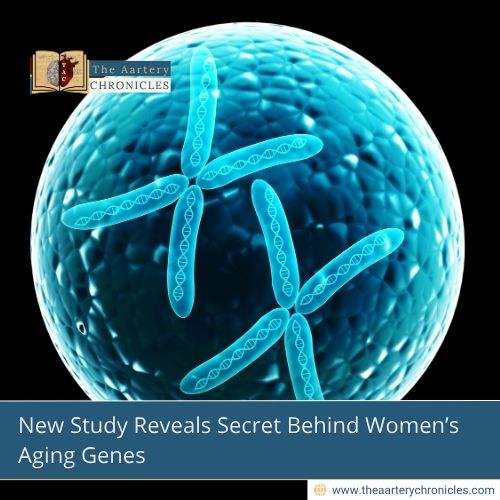

New Study Reveals Secret Behind Women’s Aging Genes
As people get older, health problems like heart disease, dementia, and Parkinson’s disease tend to show up differently in women than in men. A new study from the Technical University of Munich (TUM) offers a groundbreaking explanation for this difference: in ageing females, a normally inactive X chromosome starts to “wake up,” switching on genes that were previously silent.
This discovery could reshape how scientists understand sex-based differences in age-related diseases.
The Basics: X Chromosomes and the Barr Body
Every woman has two X chromosomes, while men have one X and one Y. To prevent the overactivity of genes, women naturally shut down one of their two X chromosomes in every cell. This shut-down chromosome becomes tightly packed into what’s called a Barr body, making its genes unreadable or so it was thought.
Scientists already knew that a few genes can sometimes “escape” this shutdown, but it was unclear how often this happens or how it changes over time.
Ageing Loosens the Inactive X Chromosome
Researchers at TUM studied tissues from female mice of different ages. They discovered that the inactive X chromosome becomes less tightly packed as the mice get older. This loosening allows more genes to escape inactivation.
In adult mice, about 3% of genes on the inactive X were still active. But in older mice, that number doubled to 6%, and in some organs like the kidney, it reached almost 9%.
This process was most noticeable at the ends of the X chromosome, where the chromatin structure (the way DNA is packed) becomes looser with age, making it easier for certain genes to turn back on.
Reactivated Genes May Affect Disease Risk
Importantly, many of the genes that become active again are linked to diseases. Although this research was done in mice, the human X chromosome is very similar suggesting the same process could happen in ageing women.
One example is the ACE2 gene, which becomes more active in the lungs with age. This gene may help prevent pulmonary fibrosis, a condition that causes scarring in the lungs. On the flip side, the gene TLR8, which also becomes more active, has been linked to autoimmune diseases like late-onset lupus.
Rethinking the Role of Sex in Disease
“Up until now, differences in how men and women age have mostly been explained by hormones or lifestyle factors,” says Dr Daniel Andergassen, lead author of the study. “But our findings suggest that genetic changes specifically, reactivation of the inactive X chromosome may also play a major role.”
This new understanding could help explain why women live longer on average than men, and why they experience different patterns in age-related diseases.
A New Direction for Research
The discovery adds a new layer of complexity to the study of ageing and disease. If scientists can understand which genes become reactivated and why, they may be able to find new ways to treat or even prevent certain diseases tailored by sex and age.
Future research will focus on whether these gene reactivations have more positive or negative effects, and how they might be controlled for better health outcomes in aging populations.
Conclusion
As women age, the previously silent second X chromosome begins to activate more genes, many of which are linked to disease. This change may help explain why women and men experience age-related health issues differently and could lead to new approaches to personalized medicine.
Source: Inputs from various media Sources

Priya Bairagi
Reviewed by Dr Aarti Nehra (MBBS, MMST)
I’m a pharmacist with a strong background in health sciences. I hold a BSc from Delhi University and a pharmacy degree from PDM University. I write articles and daily health news while interviewing doctors to bring you the latest insights. In my free time, you’ll find me at the gym or lost in a sci-fi novel.








